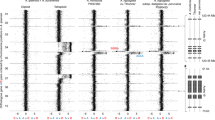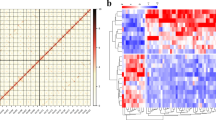Abstract
THE importance of taking chromosome characters into consideration in the study of genetical problems is becoming increasingly more apparent, particularly in relation to the species problem, and any peculiarity in this respect requires careful attention. The study of large genera and of the occurrence of polyploidy within their limits, as exemplified by Rosa and other genera, has thrown considerable light on the origin and interrelationships of the various species. In investigating Silene and the neighbouring genera from this point of view, the actual base number of chromosomes is itself of considerable interest, since in Saponaria and Dianthus it may be 14 or 15, whereas in Silene, etc., it is invariably 12. So far, however it is these latter genera, Silene, Melandrium, Lychnis, etc., which have chiefly occupied my attention, and it appeared, at first, as if the question of polyploidy scarcely arose at all; even now, after the investigation of more than sixty species, only seven have been found to be other than diploid. Among these, however, one, Silene ciliata, has shown itself of such exceptional interest that it seemed to me worth while directing special attention to it. In the genus Silene, although more than thirty species have been examined, only two show polyploidy: of these S. vallesia is a normal tetraploid, whilst in the case of S. ciliata I have investigated two races, one of which is tetraploid and the other has a haploid count of 96 and is therefore 16-ploid. The plants of this latter race were perfectly normal in chromosome behaviour and fertile. The two races were obtained from different sources and both were quite typical, and this within a species which is somewhat variable.
This is a preview of subscription content, access via your institution
Access options
Subscribe to this journal
Receive 51 print issues and online access
$199.00 per year
only $3.90 per issue
Buy this article
- Purchase on Springer Link
- Instant access to full article PDF
Prices may be subject to local taxes which are calculated during checkout
Similar content being viewed by others
Author information
Authors and Affiliations
Rights and permissions
About this article
Cite this article
BLACKBURN, K. Polyploidy within a Species. Nature 120, 157–158 (1927). https://doi.org/10.1038/120157c0
Issue Date:
DOI: https://doi.org/10.1038/120157c0
Comments
By submitting a comment you agree to abide by our Terms and Community Guidelines. If you find something abusive or that does not comply with our terms or guidelines please flag it as inappropriate.



